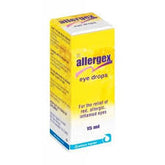Hearing tests
Hearing tests, also known as audiometric evaluations, are diagnostic assessments conducted to measure an individual's ability to hear sounds across different frequencies and intensities. These tests play a crucial role in identifying hearing loss, determining its severity and type, and guiding appropriate intervention strategies. Understanding the types, procedures, and importance of hearing tests is essential for early detection and management of hearing impairment.
Types of Hearing Tests
There are several types of hearing tests, each serving a specific purpose in assessing auditory function:
-
Pure-Tone Audiometry: Pure-tone audiometry measures an individual's hearing thresholds (the softest sounds they can hear) across different frequencies (pitch) using headphones or insert earphones. This test helps determine the degree, type, and configuration of hearing loss.
-
Speech Audiometry: Speech audiometry assesses an individual's ability to understand speech at different volume levels and in various listening conditions. This test evaluates speech discrimination, speech recognition, and auditory processing abilities.
-
Tympanometry: Tympanometry evaluates the function of the middle ear and the mobility of the eardrum (tympanic membrane) by measuring pressure changes in the ear canal. This test helps identify middle ear disorders such as fluid accumulation, perforations, or eustachian tube dysfunction.
-
Otoacoustic Emissions (OAEs): Otoacoustic emissions are low-level sounds generated by the inner ear in response to auditory stimulation. OAE testing measures these emissions to assess the integrity of the cochlea (inner ear) and outer hair cells.
-
Auditory Brainstem Response (ABR): Auditory brainstem response testing evaluates the electrical activity of the auditory nerve and brainstem in response to sound stimuli. This test is commonly used to screen hearing in newborns and infants and to assess auditory function in individuals who cannot undergo behavioral testing.
-
Auditory Processing Tests: Auditory processing tests assess an individual's ability to process and interpret auditory information, including sound localization, temporal processing, and auditory discrimination tasks.
Procedures
The procedures for conducting hearing tests may vary depending on the type of test and the individual's age and communication abilities:
-
Patient Preparation: The patient is typically seated in a quiet room or sound booth to minimize background noise and distractions during the test.
-
Equipment Setup: The audiologist or hearing healthcare professional prepares the testing equipment, including audiometers, tympanometers, OAE probes, or ABR electrodes.
-
Instructions: The patient receives instructions on how to respond to auditory stimuli (e.g., raising a hand, pressing a button) and what to expect during the test.
-
Threshold Testing: Pure-tone audiometry begins with threshold testing, where the patient listens to tones presented at varying frequencies and intensities through headphones or insert earphones.
-
Speech Testing: Speech audiometry involves presenting recorded or live speech stimuli at different volume levels to assess speech understanding, discrimination, or recognition.
-
Middle Ear Assessment: Tympanometry measures the compliance of the eardrum and middle ear system by varying air pressure in the ear canal.
-
Objective Tests: OAE and ABR testing are objective tests that do not require active participation from the patient. OAEs are measured by placing a probe in the ear canal, while ABR electrodes are placed on the scalp to measure neural responses to sound.
-
Data Analysis: The audiologist analyzes the test results to determine hearing thresholds, speech understanding abilities, middle ear function, and cochlear integrity.
Importance
Hearing tests are essential for several reasons:
-
Early Detection: Hearing tests facilitate the early detection of hearing loss, allowing for timely intervention and management to prevent further deterioration.
-
Diagnosis: Hearing tests help diagnose the type, severity, and configuration of hearing loss, guiding appropriate treatment and rehabilitation strategies.
-
Treatment Planning: Test results inform treatment planning, including the selection and fitting of hearing aids, cochlear implants, assistive listening devices, or other amplification systems.
-
Monitoring Progress: Regular hearing tests allow for monitoring changes in hearing thresholds over time and assessing the effectiveness of intervention strategies.
-
Communication Access: Accurate assessment of auditory function ensures access to communication and educational resources, including speech therapy, auditory training, and classroom accommodations.
-
Health Maintenance: Hearing tests contribute to overall health maintenance and well-being by identifying potential auditory disorders, middle ear infections, or other medical conditions that may affect hearing.
Conclusion
Hearing tests play a crucial role in assessing auditory function, diagnosing hearing loss, and guiding appropriate intervention strategies to improve communication and overall quality of life. By understanding the types, procedures, and importance of hearing tests, individuals can take proactive steps to monitor their hearing health, seek timely evaluation and intervention when needed, and maximize their auditory function. If you have concerns about your hearing or suspect hearing loss, consult a qualified audiologist or hearing healthcare professional for comprehensive evaluation and personalized recommendations. Early detection and intervention are key to maintaining optimal hearing health and well-being.
- Complication of Hearing tests
- Diagnosis of Hearing tests
- Hearing tests
- Hearing tests myths
- How is Hearing tests treated?
- Medicine for Hearing tests
- Remedies for Hearing tests
- Support for Hearing tests
- Symptoms associated with Hearing tests
- The best British Online Pharmacy
- Top 10 UK Pharmacies
- Treatment for Hearing tests
- What causes Hearing tests
- What is Hearing tests
- Where can I buy medicine for Hearing tests in the UK
- ZimSeller Pharmacy



















